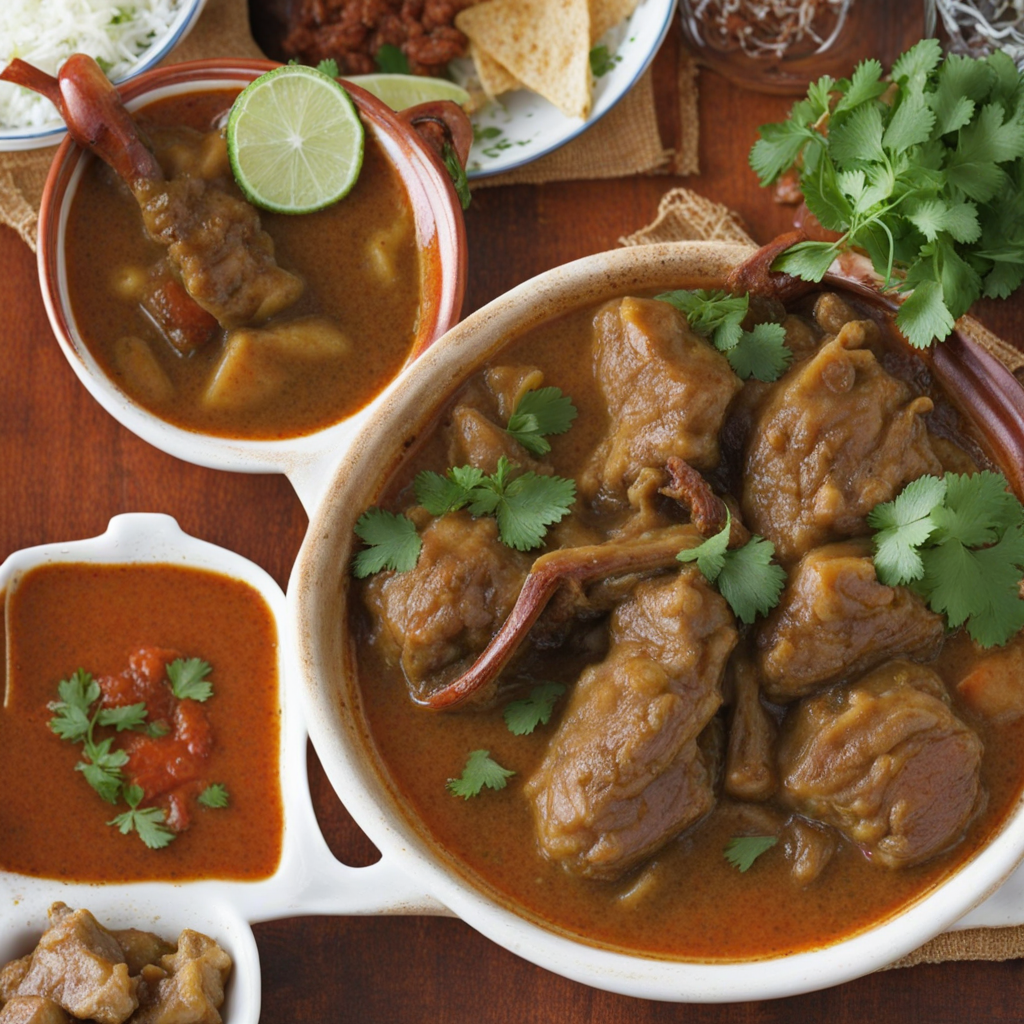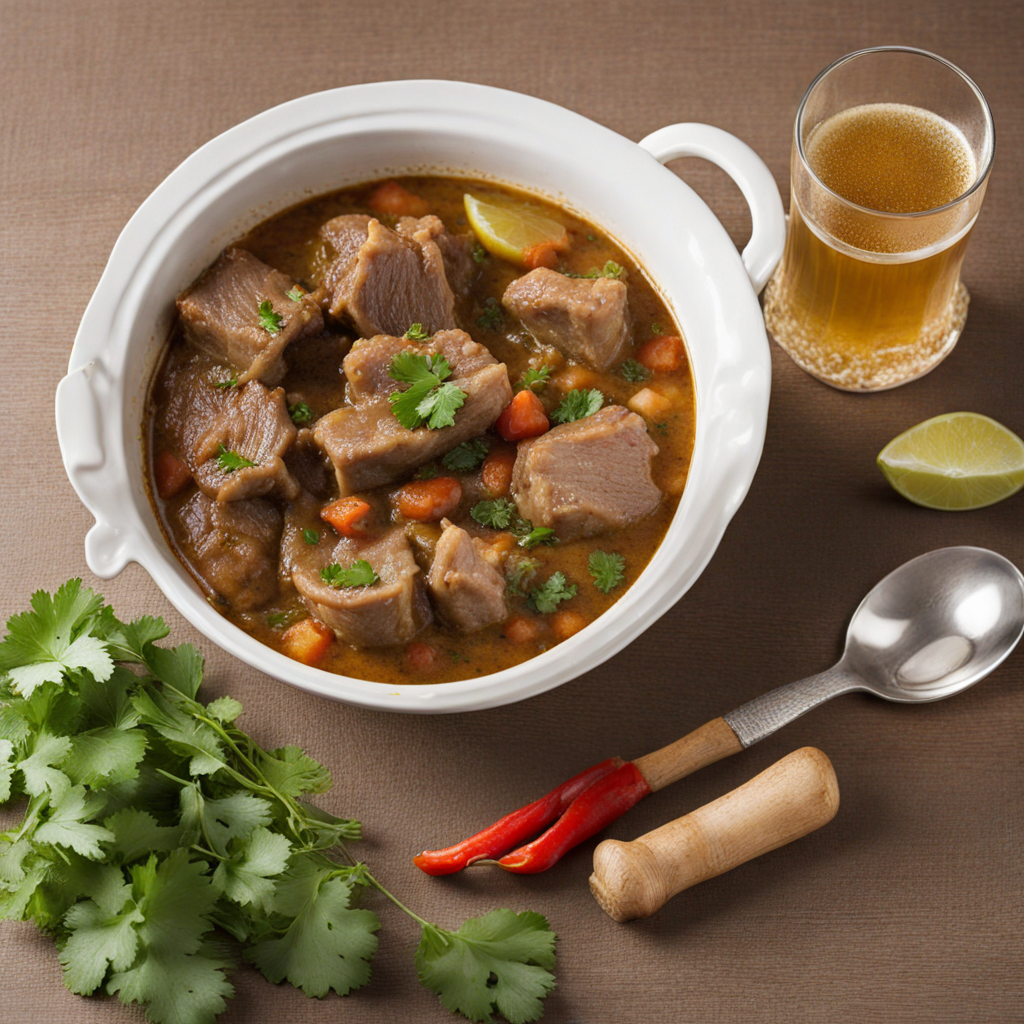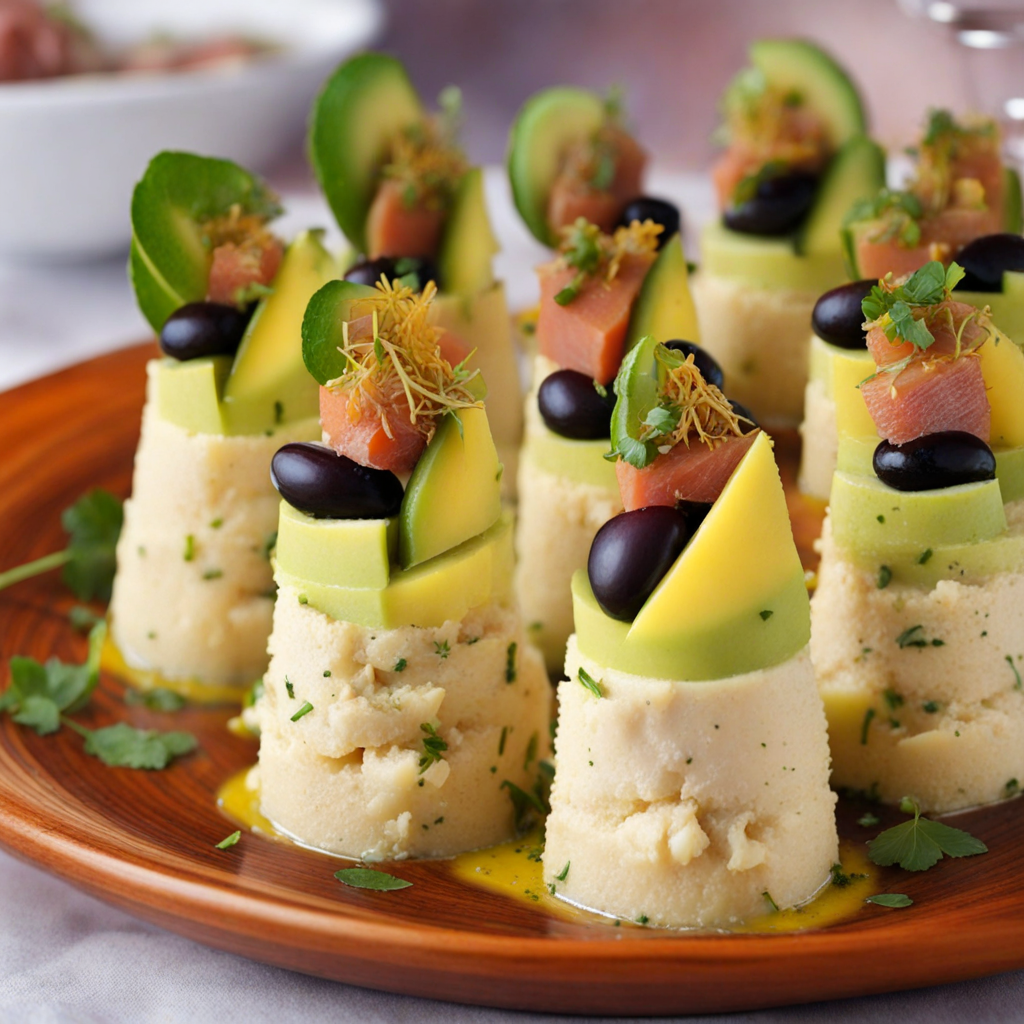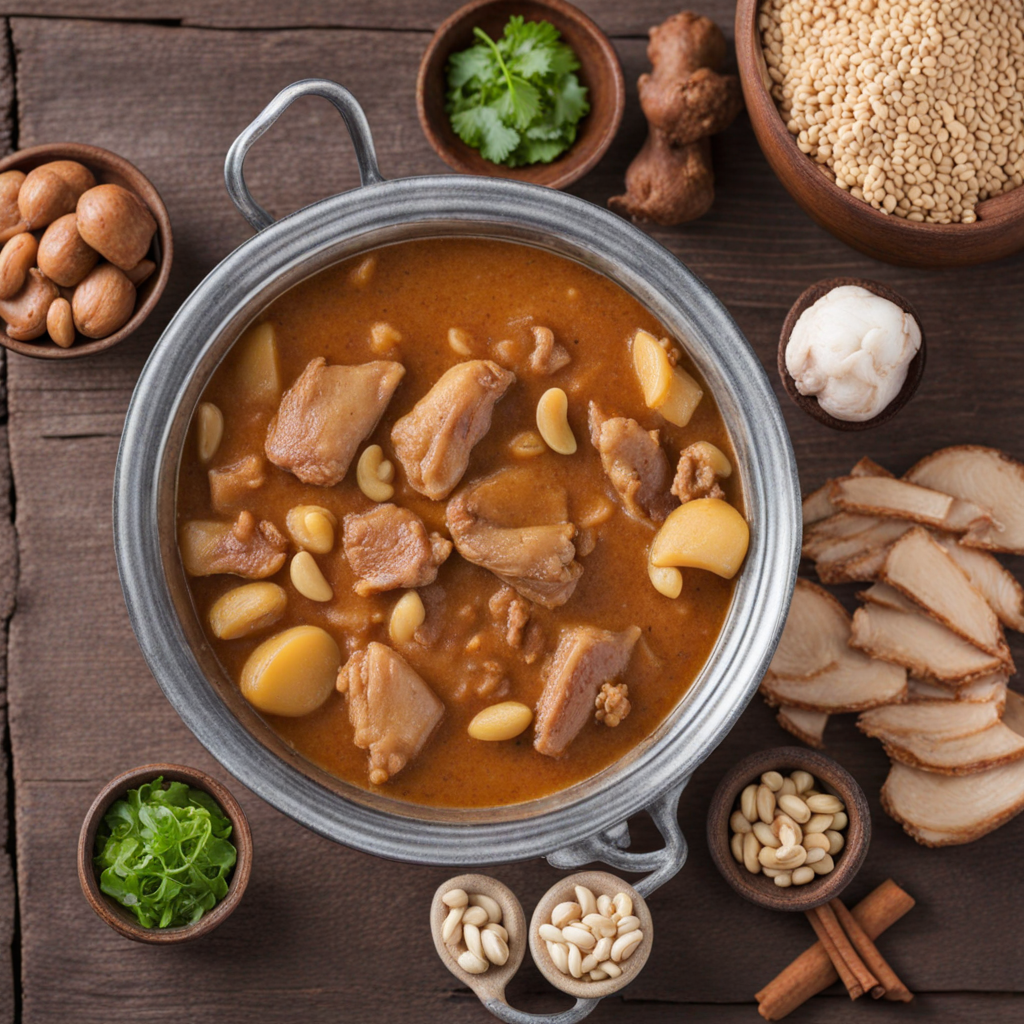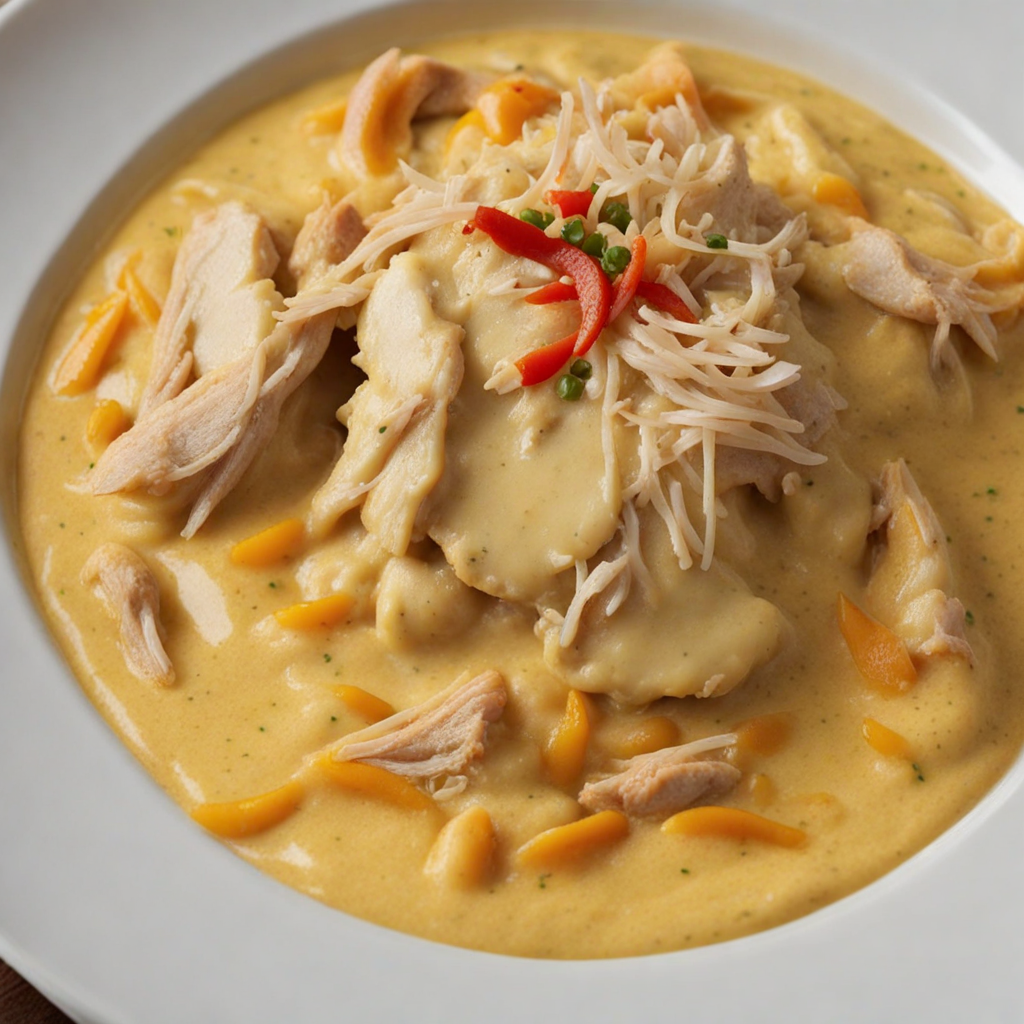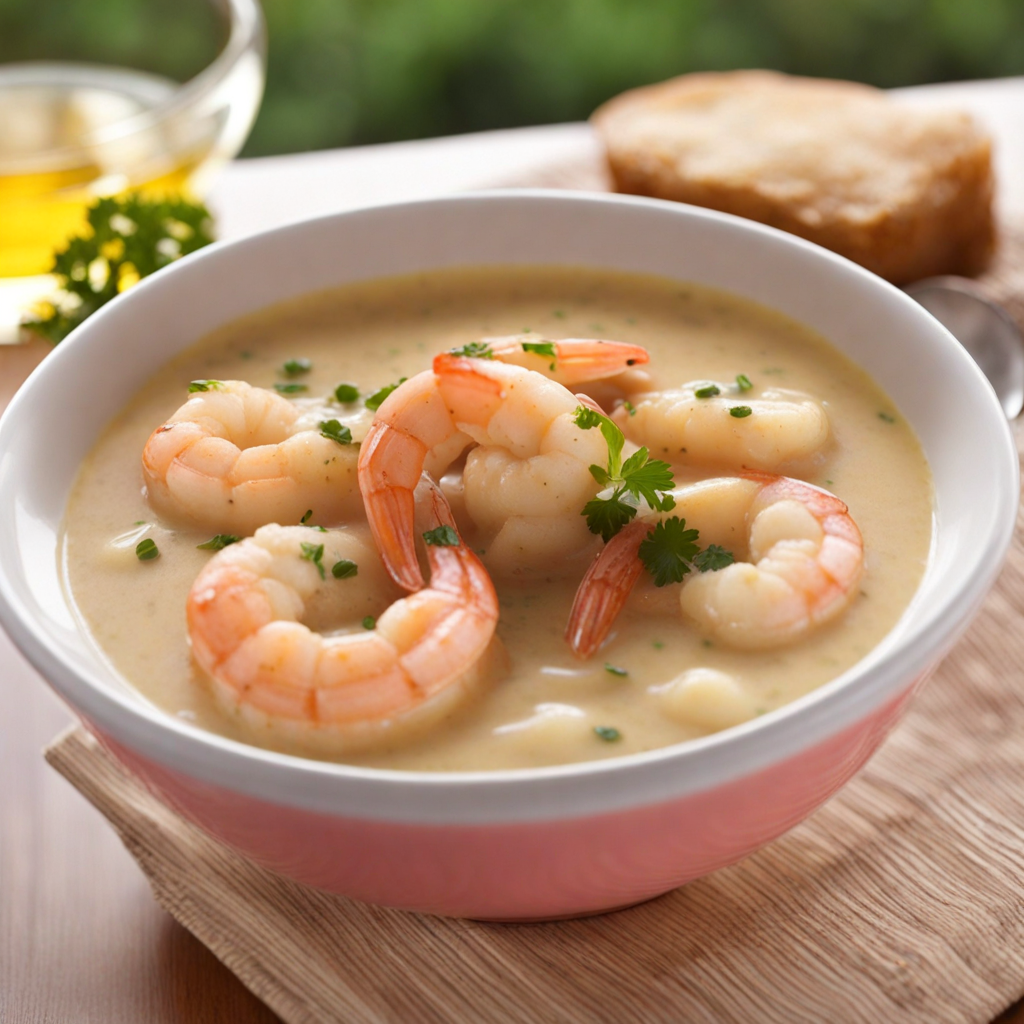Seco de Cordero
Seco de Cordero is a traditional Peruvian dish that showcases the rich flavors and culinary heritage of the Andes. This hearty lamb stew is characterized by its vibrant green sauce, which is made from a blend of fresh herbs such as cilantro, parsley, and sometimes a touch of mint. The lamb is marinated in this aromatic mixture, allowing the herbs to penetrate the meat deeply. It is then slow-cooked until tender, infusing the dish with a luscious, earthy flavor that is both comforting and invigorating. The dish is typically accompanied by a side of rice or potatoes, which soak up the flavorful sauce and complement the tender lamb beautifully. The combination of spices used in Seco de Cordero often includes cumin, garlic, and a hint of chili, providing a warm, zesty kick that enhances the overall experience. Some variations may also incorporate Peruvian beer or chicha de jora, a fermented corn beverage, to deepen the flavor profile and add a subtle sweetness to the stew. Enjoying Seco de Cordero is not just about savoring a meal; it’s an invitation to explore Peru's culinary landscape. Each bite tells a story of tradition and culture, revealing the importance of fresh, local ingredients in Peruvian cooking. Whether served at a family gathering or a local eatery, this dish is a true representation of the flavors and spirit of Peru, inviting food lovers to embark on a delicious journey.
How It Became This Dish
Seco de Cordero: A Culinary Journey Through Peru Seco de Cordero, a rich and flavorful lamb stew, is one of the emblematic dishes of Peruvian cuisine, reflecting the country's diverse cultural influences and rich agricultural heritage. To understand the essence of Seco de Cordero, one must delve into its origins, cultural significance, and its evolution over time. Origins The history of Seco de Cordero is deeply rooted in the Andean traditions of Peru. The term 'seco' originates from the Spanish word meaning "dry," which refers to the traditional preparation method where the meat is cooked down to achieve a thick consistency. The dish showcases the culinary techniques brought to Peru by Spanish colonizers in the 16th century, who integrated their cooking practices with the indigenous ingredients available in the region. Lamb, or "cordero," was not a native meat to the Andes; it was introduced by the Spanish, who brought sheep from Europe. The adaptation of this foreign meat into the local diet reflects the broader narrative of Peruvian cuisine, where indigenous ingredients and techniques intermingled with European influences. The use of herbs like cilantro, which is a key component of Seco de Cordero, can be traced back to pre-Columbian times, wherein various herbs and vegetables were utilized for flavoring and medicinal purposes. Cultural Significance Seco de Cordero is more than just a dish; it embodies the spirit of Peruvian hospitality and the communal nature of Andean culture. It is often served during family gatherings, celebrations, and festivals, symbolizing unity and togetherness. In regions such as the highlands and coastal areas, where lamb farming is prevalent, Seco de Cordero serves as a reminder of the agricultural practices that sustain local communities. In the context of Peruvian gastronomy, Seco de Cordero is representative of the "fusion" that defines the country's culinary identity. The dish is often accompanied by rice and beans, illustrating the importance of these staples in the Peruvian diet. Additionally, it speaks to the influence of Afro-Peruvian cuisine, with roots tracing back to the African slaves brought to Peru during colonial times, who contributed their cooking techniques and flavors to the melting pot of Peruvian cuisine. Development Over Time As Peru evolved, so did its culinary landscape, including Seco de Cordero. In the 20th century, as migration patterns shifted and globalization began to influence local cuisines, Seco de Cordero adapted accordingly. Chefs and home cooks alike began experimenting with different ingredients and techniques, giving rise to various regional adaptations of the dish. In the highlands, where the dish is particularly popular, local variations may incorporate ají peppers and potatoes, while in coastal regions, cooks might add a touch of lime and other fresh ingredients to enhance the flavors. Each region boasts its own version of Seco de Cordero, influenced by the local climate, available produce, and culinary traditions. The dish gained further recognition in the 1990s with the rise of Peruvian gastronomy on the global stage. Renowned chefs like Gastón Acurio and others began to highlight traditional Peruvian dishes, including Seco de Cordero, in fine dining establishments and culinary festivals. This newfound attention not only elevated the status of Seco de Cordero but also fostered a renewed interest in traditional ingredients and preparation methods. Ingredients and Preparation What sets Seco de Cordero apart is its unique blend of flavors, which encapsulates the essence of Peruvian cuisine. The dish typically features tender lamb pieces, marinated with a vibrant mix of cilantro, garlic, onions, and spices. The marination process allows the meat to absorb the fresh, herbaceous flavors that are characteristic of Peruvian cooking. The preparation involves browning the meat to develop a rich, deep flavor before simmering it slowly in a broth made from the marinade, beer, or a local chicha (fermented corn drink). The slow cooking process tenderizes the lamb and allows the flavors to meld beautifully, resulting in a hearty stew that is both comforting and satisfying. Accompanying the Seco de Cordero are traditional sides. A popular choice is white rice, which balances the rich stew, as well as beans, which add texture and nutrition. In some regions, plantains or potatoes may also be served, further showcasing the variety of local produce. Seco de Cordero Today In contemporary Peru, Seco de Cordero continues to thrive as a beloved dish, both in homes and restaurants. Its prominence at family gatherings and special occasions ensures its place within the cultural fabric of Peruvian society. Moreover, the dish's adaptability means it can cater to modern palates while maintaining its traditional roots. As Peru continues to gain recognition as a culinary destination, Seco de Cordero stands as a testament to the country's rich history and cultural diversity. Food festivals, culinary tours, and international chefs showcasing Peruvian cuisine further solidify the dish's status on the global stage. Conclusion Seco de Cordero is not merely a meal; it is a narrative woven through the threads of Peruvian history, culture, and community. Its journey from the Andean highlands to the tables of global gastronomy demonstrates the resilience and adaptability of Peruvian cuisine. As we savor every bite of this tender lamb stew, we are reminded of the rich tapestry of flavors and traditions that make up Peru's culinary heritage. In every dish, there lies a story, and in the case of Seco de Cordero, it is a story of love, unity, and the enduring power of food to connect us all.
You may like
Discover local flavors from Peru


